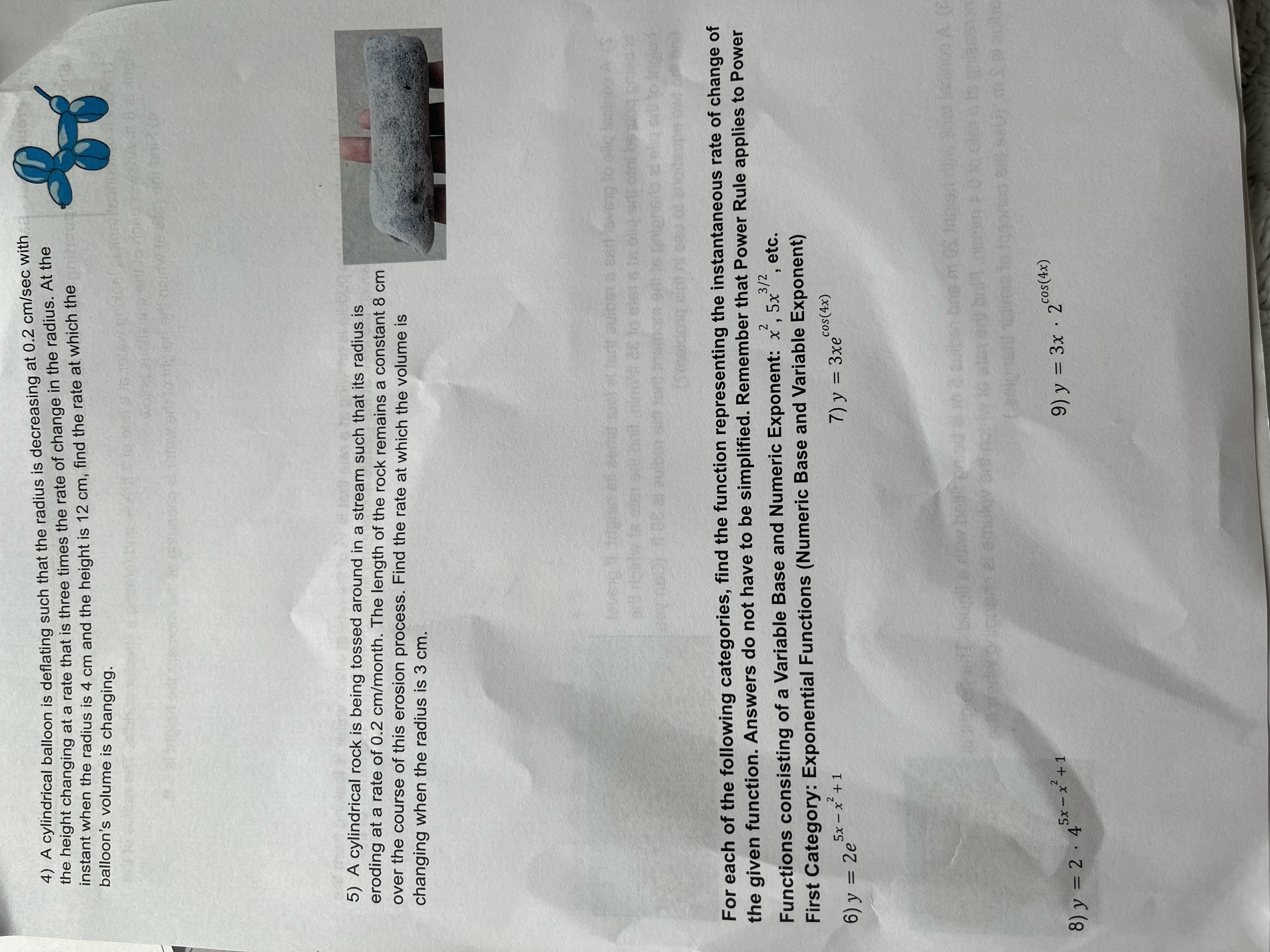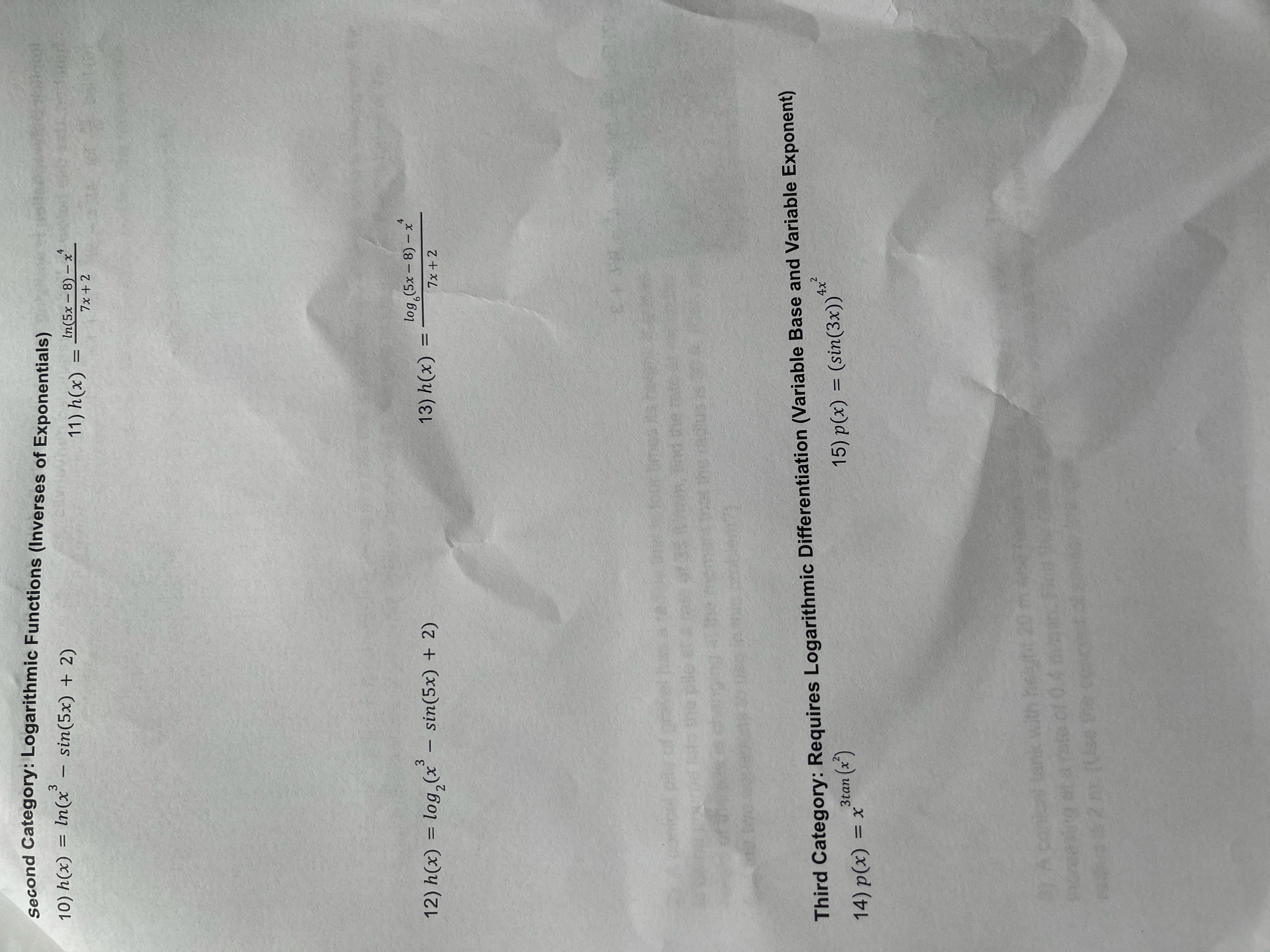Answered step by step
Verified Expert Solution
Question
1 Approved Answer
4) A cylindrical balloon is deflating such that the radius is decreasing at 0.2 cm/sec with the height changing at a rate that is


4) A cylindrical balloon is deflating such that the radius is decreasing at 0.2 cm/sec with the height changing at a rate that is three times the rate of change in the radius. At the instant when the radius is 4 cm and the height is 12 cm, find the rate at which the balloon's volume is changing. 5) A cylindrical rock is being tossed around in a stream such that its radius is eroding at a rate of 0.2 cm/month. The length of the rock remains a constant 8 cm over the course of this erosion process. Find the rate at which the volume is changing when the radius is 3 cm. oilsupe S For each of the following categories, find the function representing the instantaneous rate of change of the given function. Answers do not have to be simplified. Remember that Power Rule applies to Power Functions consisting of a Variable Base and Numeric Exponent: x, 5x etc. First Category: Exponential Functions (Numeric Base and Variable Exponent) 2 3/2 ' 5x-x+1 6) y : = 2e 8) y = 2.45x-x+1 cos(4x) 7) y = 3xe of blupils low belt prod a in 2 subs so al amuley or pol assion 9) y = 3x 2 cos(4x) Second Category: Logarithmic Functions (Inverses of Exponentials) 10) h(x) = ln(x- sin(5x) + 2) 11) h(x) In(5x-8) x - = 7x+2 3 log (5x-8) - x 4 12) h(x) = log(x - sin(5x) + 2) 13) h(x) = 7x+2 Third Category: Requires Logarithmic Differentiation (Variable Base and Variable Exponent) 3tan (x) 14) p(x) = x 15) p(x) = (sin(3x)) 4x
Step by Step Solution
There are 3 Steps involved in it
Step: 1

Get Instant Access to Expert-Tailored Solutions
See step-by-step solutions with expert insights and AI powered tools for academic success
Step: 2

Step: 3

Ace Your Homework with AI
Get the answers you need in no time with our AI-driven, step-by-step assistance
Get Started


